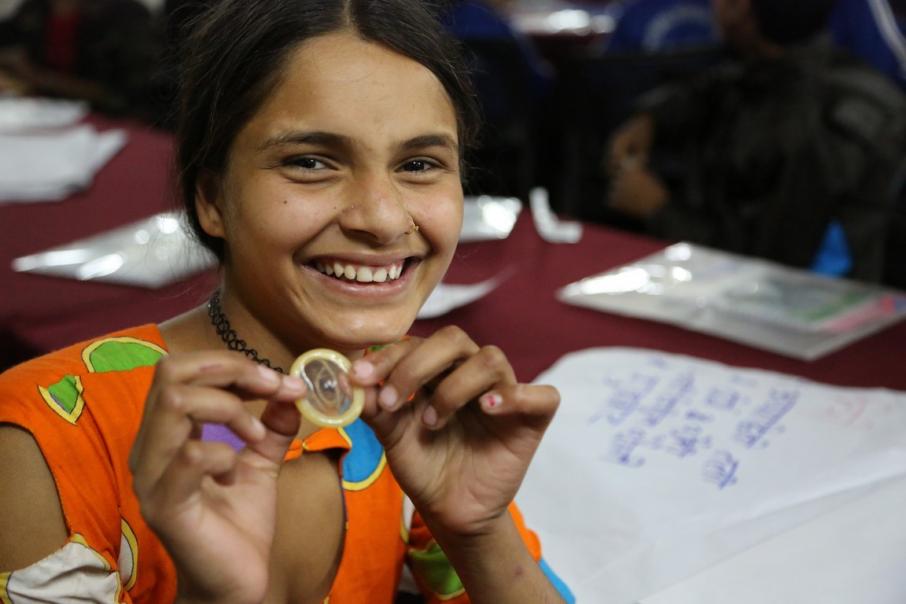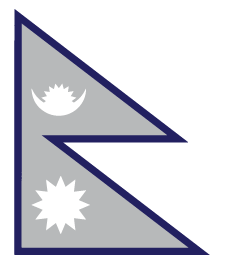Developing peer support for adolescent friendly sexual and reproductive health services in Rasuwa and Nuwakot districts

Adolescence is the period of physical, psychological, and social maturing from childhood to adulthood. Generally the term "adolescent" refers to individuals between the ages of 10 to 19 years. (WHO, 1989). There is growing recognition that because of a combination of biological, psychological and social factors adolescents face many different health risks and problem such as sexually transmitted infections including HIV/AIDS early and frequent pregnancy, accidents and violence. On the other hand adolescents are usually very energetic and curios to information that pertains to them and are anxious to become more autonomous in their decision making. Such curiosity and interest in learning offers great opportunities for improving health and development. The health of adolescents is profoundly linked to their development since their physical, psychological and social abilities help to determine their behavior. The young people of today are tomorrow's adults. It is of paramount importance that an environment be created and adequate support provided to enable adolescents to develop their full potential and to enjoy a healthy and responsible adulthood.
This study was conducted by WOREC in technical and financial support of Grand Challenge Canada (GCC) and Memorial University of Newfound land, Canada. This study sought to provide new ways of teaching and learning methods to adolescent in sexual and reproductive health so that they can be well prepared for their future life. Present study has tried to look at ways to improve ASRH (adolescent sexual and reproductive health).
Study was conducted from May 2018 to December 2019 (20 months) where intervention period was from December 2018 to September 2019 (10 months). Study was conducted in Nuwakot and Rasuwa district which was badly hit by earthquake of 2015. Study site were chosen where government has taken initiative to promote delivery of adolescent friendly service (AFS). Study design was mixed methods, explanatory and exploratory sequential approaches with peer ethnography. Survey, focus group discussion (FGD), in depth interview (IDI), gallery walk were methods used to collect data.
In the study, five site as intervention site and five site as non-intervention site from both district were chosen purposively i.e altogether 10 intervention site and ten nonintervention site were chosen. Peer education program was conducted among intervention site where teachers and students were trained on SRHR. Tablets with SRHR app called “Sahayogi” were provided to schools of intervention sites. Peers were made main focal person who taught their friends on using tablet and kept observing their behavior throughout the intervention period. After the intervention, difference between knowledge and health seeking behavior of adolescent in these two groups were compared. Study has tried to see what actually worked and what did not works with adolescent to receive safe information and seek health services. The study has tried to look at various social aspect, lack of access to education and health in a post disaster recovery context and also the effectiveness of adolescent program run by government.
Major findings of the study
- Early marriage is common in both Nuwakot and Rasuwa districts. Among Aryan community (Brahmin and Chhetri), marriage by parent’s wish (arranged marriage) used to be common, but now self-initiated marriage has become common. Whereas among Mongolian community (Tamang), self-initiated marriage is a part of culture.
- The main reasons for early marriage identified were lack of awareness, early marriage as a culture and lack of social support for inter-caste marriage.
- Very few adolescents return to school after marriage. Because of shyness they did not continue their school. There is not a welcoming environment in school and community where adolescents can come and continue their study after marriage.
- There is an awkwardness and hesitation among teachers while teaching ASRH.
- Peer education program was found to be effective program for students. Students got more knowledge on adolescent sexual and reproductive health (ASRH) which was not included in their curriculum.
- Participants stated that, sahayogi app has full information on ASRH. Students were excited to use the technology because they have not used such technology before and due to games and videos it was also fun to use.
- Topics such as masturbation, nightfall (nocturnal ejaculation) and information on LGBTQ, sexualities were completely new topic to participants.
- At the end of intervention, 66 peer educators felt that their expertise was recognized and they were in a position to be agents of change. These peer educator performed, used a variety of media such as theatre, songs and games to generate awareness and raise interest, not only amongst their peers but also at the community level.
- As an effect of peer education program, students has become less shy and they can deal with issue of ASRH comfortably. This shows peer education program is a good method of educating young adolescents on ASRH.
- In all 20 schools an Adolescent Friendly Service Corner (AFS Corner) for education were not established.
- Uptake of SRHR services by adolescents was very low. Study shows there is a lack of trust with health care provider. Only married adolescent sought ASRH service. Adolescent girls seek more services than boys.
- Out of 20 health institutions, 17 institutions do not have separate adolescent counselling corner. Some health institutions had provided counselling service by taking another room where there is privacy. Because of the earthquake most of the health institutions were in temporary buildings with insufficient space.
- Most of the health care providers think their health post is not fully adolescent friendly. They mentioned, lack of proper building and lack of staff as main challenges for establishing adolescent friendly health services. They themselves were not satisfied with the service they are delivering.
- After intervention number of students increased who gave correct answer on issue like LGBTIQ, concept of homosexuality, menstrual exclusion, causes of uterine prolapse and cybercrime.
- Study shows, parents identified the challenges they face both culturally and with regard to their own lack of knowledge in sharing information with their own children. This shows clearly that parents are not a viable source of sexual and reproductive health information in many rural communities.
- Best way to educate adolescents on ASRH is using a multiple approach that includes both mobile technology (apps), other media such as videos, arts based media such as theatre and songs and classic educational approaches that included an updating of the curriculum. This recognizes the different needs of various learners and provides a number of opportunities for people to gain access to the information.
Read full report:
Latest Comments
Upcoming Events
Editor's Pick
- Emergence and Practice of Feminist Knowledge in Nepal General
- Walls Turned Sideways Are Bridges Reports
- No Justice without Reparation: Why Rape Survivors Must Have a Right to Compensation General
- Child Marriage Prosecutions in India - Case Law Analysis of Actors, Motives and Outcomes 2008-2017 General
- Feminist Leadership best practices - Sangat Best Practices



